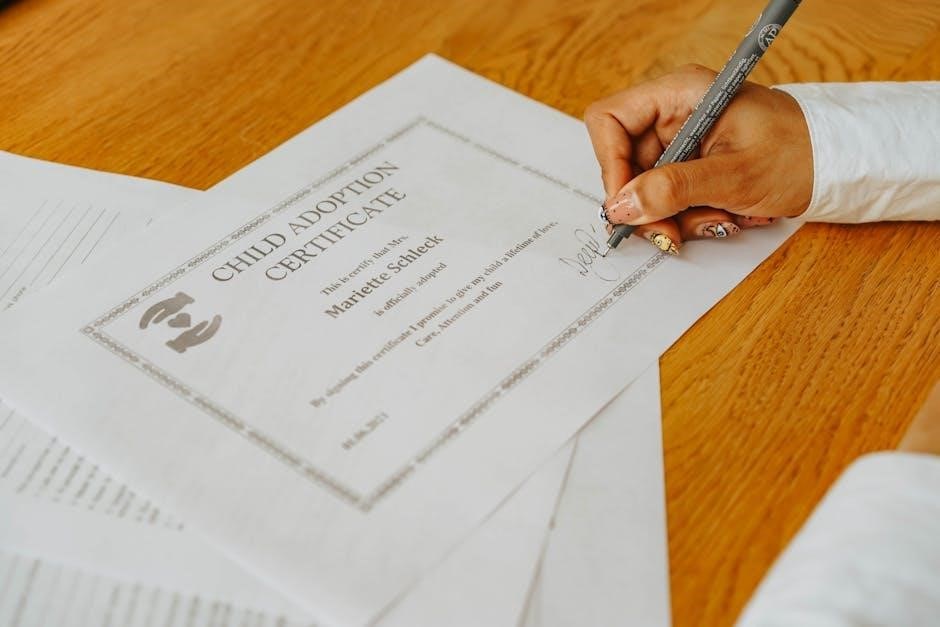The Children’s Bill of Rights in Divorce outlines essential principles to protect children’s well-being during parental separation. It ensures their emotional and legal needs are prioritized‚ fostering stability and fairness.
1.1 Definition and Purpose
The Children’s Bill of Rights in Divorce is a legal and ethical framework designed to safeguard children’s interests during parental separation. Its primary purpose is to ensure children’s emotional‚ psychological‚ and legal well-being are prioritized. The bill defines specific rights‚ such as protection from exploitation‚ freedom of expression‚ and the right to participation in decisions affecting their lives. It aims to balance the needs of both parents while ensuring children’s voices are heard and their dignity is maintained. This framework serves as a guide for courts‚ parents‚ and guardians to uphold children’s best interests during and after divorce proceedings.
1.2 Historical Context and Development
The Children’s Bill of Rights in Divorce has its roots in the 20th century‚ emerging from growing awareness of children’s emotional and legal needs during parental separation. Influenced by global child rights movements‚ including the UN Convention on the Rights of the Child‚ the bill was developed to address the psychological impact of divorce on minors. Over time‚ it evolved to include specific protections‚ ensuring children’s voices are heard and their well-being prioritized. This framework reflects a shift toward recognizing children as active participants in family legal matters rather than passive victims of circumstance.
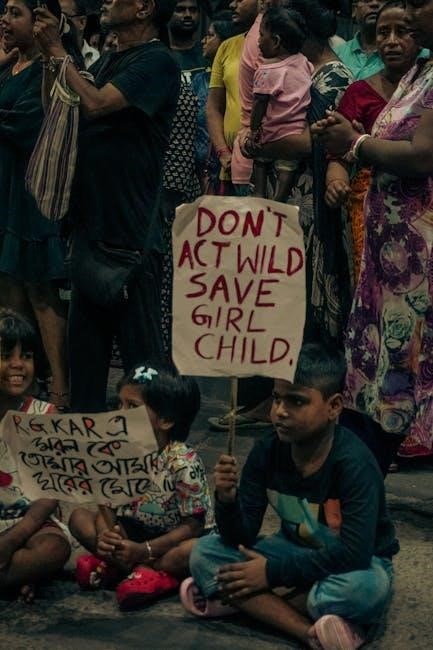
Key Provisions of the Children’s Bill of Rights in Divorce
The Bill enumerates children’s rights during divorce‚ including protection from exploitation‚ freedom of expression‚ and the right to both parents’ involvement‚ ensuring their emotional and legal safety.
2.1 Right to Protection from Exploitation
Children have the right to be safeguarded from exploitation in all forms during divorce proceedings. This ensures they are not used as tools for emotional manipulation or financial gain by either parent. Courts and legal systems must prioritize their welfare‚ preventing any scenario where a child’s well-being is compromised for adult interests. This protection is fundamental to maintaining their emotional and psychological stability throughout the divorce process.
2.2 Right to Freedom of Expression
Children possess the right to freely express their thoughts‚ feelings‚ and opinions regarding their experiences and wishes in divorce proceedings. This ensures their voices are heard and considered by parents and legal authorities. Article 13 of the UNCRC supports this right‚ emphasizing that children should not face undue restrictions in sharing their perspectives. Courts often consider their views based on age and maturity‚ ensuring their emotional needs are acknowledged and respected throughout the process.
2.3 Right to Information and Participation
Children have the right to receive age-appropriate information about divorce proceedings and their implications; This includes understanding their roles and the potential outcomes affecting them. They also have the right to participate in decisions that impact their lives‚ such as custody arrangements. According to the UNCRC‚ children should be provided with clear and accessible information‚ enabling them to express their opinions effectively. This ensures they are active participants in processes that shape their future well-being and stability.
2.4 Right to Privacy and Dignity
Children have the right to maintain their privacy and dignity during divorce proceedings. This includes protection from unnecessary exposure to adult conflicts or sensitive information. Their personal space and confidentiality must be respected by both parents and legal authorities. Ensuring their dignity involves safeguarding their personal information and shielding them from situations that may cause emotional harm or embarrassment. This right emphasizes the importance of maintaining a child-centered approach‚ focusing on their well-being and avoiding actions that could compromise their self-esteem or privacy during this challenging time.
2.5 Right to Both Parents’ Involvement
Children have the right to maintain a meaningful relationship with both parents following divorce. This principle ensures that both parents remain actively involved in their lives‚ providing emotional support and guidance. The right to both parents’ involvement is crucial for a child’s emotional well-being‚ as it fosters a sense of stability and security. Courts and parents are encouraged to collaborate in creating arrangements that prioritize the child’s best interests‚ ensuring shared responsibilities and equal opportunities for both parents to contribute to their child’s upbringing and development.

Importance and Benefits of the Bill
The Bill ensures children’s emotional and legal rights are protected during divorce‚ promoting stability‚ fairness‚ and their overall well-being‚ while fostering a supportive environment for their development.
3.1 Ensuring Children’s Emotional Well-being
The Bill prioritizes children’s emotional well-being by safeguarding their right to a stable and loving environment. It emphasizes the importance of both parents’ involvement and open communication‚ reducing feelings of abandonment or guilt. By ensuring children’s voices are heard and their needs addressed‚ the Bill helps mitigate the psychological impact of divorce. This focus fosters resilience and allows children to navigate the transition with greater emotional security‚ promoting healthy development and long-term mental health.
3.2 Providing Legal Protection for Children
The Children’s Bill of Rights in Divorce establishes legal safeguards to protect children from exploitation and neglect. It ensures their best interests are prioritized in court decisions‚ emphasizing their right to a safe and nurturing environment. The Bill guarantees access to legal representation and support systems‚ preventing marginalization. By enshrining these protections‚ it ensures children are not treated as commodities but as individuals with inherent rights‚ fostering a fair and just legal framework for their care and well-being during and after divorce proceedings.
3.3 Promoting Long-term Effects on Children’s Development
The Children’s Bill of Rights in Divorce plays a crucial role in fostering long-term positive effects on children’s development. By ensuring emotional stability and balanced relationships with both parents‚ it helps children build resilience and healthy attachment patterns; The Bill’s provisions promote a supportive environment that encourages academic‚ social‚ and emotional growth. This framework not only addresses immediate needs but also equips children with the tools to thrive in the future‚ ensuring they develop into capable and well-adjusted individuals.
Challenges and Criticisms
The Children’s Bill of Rights in Divorce faces challenges‚ including enforcement difficulties‚ cultural variations‚ and balancing legal provisions with practical family dynamics and jurisdictions.
4.1 Challenges in Enforcement
Enforcing the Children’s Bill of Rights in divorce cases often faces obstacles such as lack of awareness among parents and legal professionals. Complex legal processes and varying interpretations across jurisdictions can hinder implementation. Additionally‚ emotional tensions between parents may override children’s best interests. Limited resources in family courts and inconsistent enforcement mechanisms further complicate ensuring these rights are upheld. Cultural differences and societal norms also play a role in how these rights are perceived and applied‚ creating additional barriers to effective enforcement.
4.2 Cultural and Legal Variations
Cultural and legal variations significantly impact the implementation of the Children’s Bill of Rights in divorce. Different jurisdictions may interpret and prioritize children’s rights differently‚ leading to inconsistencies. In some cultures‚ family dynamics and societal norms overshadow legal frameworks‚ complicating enforcement; Additionally‚ legal systems vary in their ability to uphold these rights‚ with some countries lacking robust mechanisms for protection. These discrepancies highlight the need for international cooperation to ensure uniform standards for children’s rights in divorce proceedings globally.

Implementation and Enforcement
The Children’s Bill of Rights in divorce is enforced through family courts and supported by mediation and counseling services‚ ensuring adherence to legal and emotional protection standards.
5.1 Role of Family Courts
Family courts play a pivotal role in enforcing the Children’s Bill of Rights during divorce proceedings. They ensure legal protections are upheld‚ prioritizing children’s best interests. Courts interpret and apply the bill’s provisions‚ appointing representatives to advocate for children. They oversee custody arrangements‚ visitation rights‚ and financial support‚ ensuring compliance with legal standards. Courts also address violations and enforce penalties when necessary. By mediating disputes and ordering counseling‚ they help families adapt to new dynamics‚ safeguarding children’s emotional and legal rights throughout the process.
5.2 Mediation and Counseling Services
Mediation and counseling services are vital in supporting families during divorce. They provide a neutral platform for resolving disputes‚ reducing conflict‚ and fostering cooperation. Counseling helps children cope with emotional challenges‚ while mediation assists parents in creating fair custody arrangements. These services emphasize open communication and mutual understanding‚ ensuring children’s needs remain a priority. By addressing emotional and psychological impacts‚ mediation and counseling complement legal processes‚ promoting healthier family dynamics and long-term well-being for children.

Role of Parents and Guardians
Parents and guardians are responsible for ensuring children’s rights are upheld‚ providing emotional support‚ and collaborating to protect their best interests during and after divorce.
6.1 Responsibilities in Upholding Rights
Parents and guardians must prioritize children’s emotional and legal rights‚ ensuring their well-being during divorce. This includes providing stability‚ open communication‚ and protecting their best interests. They should avoid involving children in conflicts and promote a loving relationship with both parents; Legal responsibilities involve adhering to court orders and ensuring financial support. Collaboration between parents is crucial to maintain consistency and provide a nurturing environment. By fulfilling these duties‚ parents safeguard their children’s physical‚ emotional‚ and psychological needs‚ fostering long-term resilience and stability.
6.2 Collaborative Parenting Strategies
Collaborative parenting strategies ensure both parents work together to uphold children’s rights post-divorce. This includes shared decision-making‚ consistent discipline‚ and maintaining open communication. Parents should respect each other’s roles and avoid conflict in the child’s presence. Co-parenting plans can outline responsibilities and routines‚ fostering stability; Regular check-ins and mutual respect help create a supportive environment. By prioritizing collaboration‚ parents ensure their child’s emotional and psychological well-being‚ promoting resilience and a healthy relationship with both caregivers.

Legal and Social Services
Legal and social services play a crucial role in safeguarding children’s rights during divorce. These services include child representation in legal proceedings and access to support systems.
7.1 Child Representation in Legal Proceedings
Child representation in legal proceedings ensures children’s voices are heard and their best interests protected. Legal guardians or court-appointed representatives advocate for minors‚ safeguarding their rights during divorce. These representatives investigate the child’s situation‚ present their wishes to the court‚ and ensure decisions align with their well-being. The child’s participation in proceedings is facilitated‚ respecting their right to express opinions. Legal and social services work together to provide support‚ ensuring fair outcomes and reducing potential trauma for the child. This system aims to promote stability and justice for children in divorce cases.
7.2 Support Systems for Children
Support systems for children in divorce cases are crucial for their emotional and psychological well-being. These systems include counseling services‚ educational programs‚ and access to legal aid tailored for minors. Trained professionals help children navigate the challenges of divorce‚ providing a safe space to express feelings and concerns. Additionally‚ community-based initiatives and school programs offer resources to help children adapt to new family dynamics. These support systems ensure children receive the care and guidance needed to thrive during and after their parents’ separation‚ promoting long-term resilience and stability.
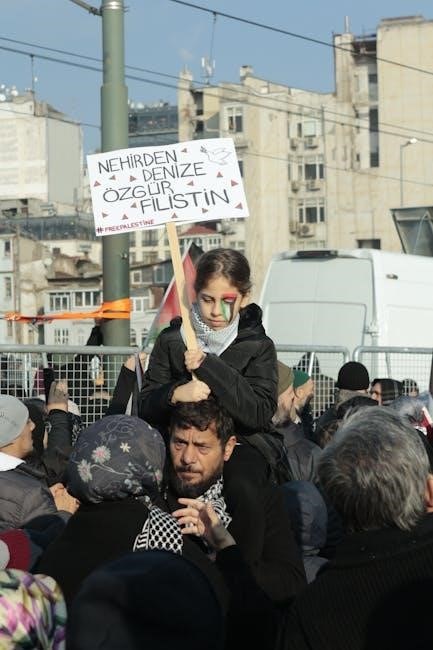
Psychological Impact on Children
Divorce can cause children psychological distress‚ leading to anxiety‚ sadness‚ and behavioral changes. Long-term effects may include trust issues and emotional scars‚ affecting their development.
8.1 Short-term Effects of Divorce
Children often experience immediate emotional turmoil‚ including anxiety‚ sadness‚ and confusion. Behavioral changes‚ such as acting out or withdrawal‚ may occur. They might feel insecure about their future and struggle with loyalty conflicts between parents. These reactions are common as they adjust to the new family dynamic. Ensuring open communication and a supportive environment is crucial to mitigate these short-term effects and help children cope effectively with the transition.
8.2 Long-term Psychological Effects
Children may experience lasting emotional challenges‚ such as difficulty trusting others‚ low self-esteem‚ and increased anxiety. Some develop behavioral issues or struggle academically. As they mature‚ they might fear relationship instability or exhibit emotional detachment. These effects vary based on factors like age‚ parental conflict‚ and support systems. Long-term psychological impacts highlight the importance of consistent‚ nurturing environments to help children adapt and thrive despite parental separation.
Educational and Advocacy Efforts
Educational programs and advocacy campaigns raise awareness about children’s rights in divorce‚ teaching parents and kids about emotional support and legal protections to foster healthier outcomes.
9.1 Awareness Campaigns
Awareness campaigns play a crucial role in educating parents and children about the Children’s Bill of Rights in divorce. These initiatives use media‚ workshops‚ and community outreach to highlight the importance of protecting children’s emotional and legal needs during separation. By promoting understanding and empathy‚ campaigns encourage parents to prioritize their children’s well-being. They also provide resources to help families navigate the challenges of divorce collaboratively. Such efforts foster a supportive environment‚ ensuring children’s rights are upheld and their voices heard during this sensitive process.
9.2 Educational Programs for Children and Parents
Educational programs for children and parents are designed to promote understanding and practical application of the Children’s Bill of Rights in divorce. These programs teach children about their rights‚ helping them express emotions and navigate the divorce process. Parents learn effective communication strategies and conflict resolution to minimize harm. Interactive workshops‚ counseling sessions‚ and educational materials empower families to address challenges collaboratively. Such initiatives foster resilience in children and encourage parents to create a supportive environment‚ ensuring long-term well-being and informed decision-making for all family members.

Case Studies and Examples
Case studies highlight successful implementations of the Children’s Bill of Rights in divorce proceedings‚ offering practical insights into applying its principles effectively for children’s benefit.
10.1 Successful Implementation Stories
A notable case involved a family where parents‚ despite divorce‚ prioritized their children’s rights. Using the Bill as a guide‚ they ensured both parents remained actively involved‚ maintaining open communication and providing emotional support. The court recognized the children’s right to express their wishes‚ influencing custody arrangements that promoted stability. This example highlights how the Bill can foster cooperation and protect children’s best interests‚ leading to positive long-term outcomes for their well-being and development.
10.2 Lessons Learned from Challenges
Despite its benefits‚ implementing the Children’s Bill of Rights in Divorce has faced challenges. One key issue is inconsistent enforcement across jurisdictions‚ highlighting the need for stronger legal frameworks. Cultural differences often complicate matters‚ as societal norms may conflict with the Bill’s principles. Additionally‚ balancing parents’ rights with children’s needs remains a challenge. Lessons learned emphasize the importance of collaboration between courts‚ parents‚ and support systems to ensure children’s rights are upheld effectively‚ underscoring the need for ongoing education and resources to address these complexities.
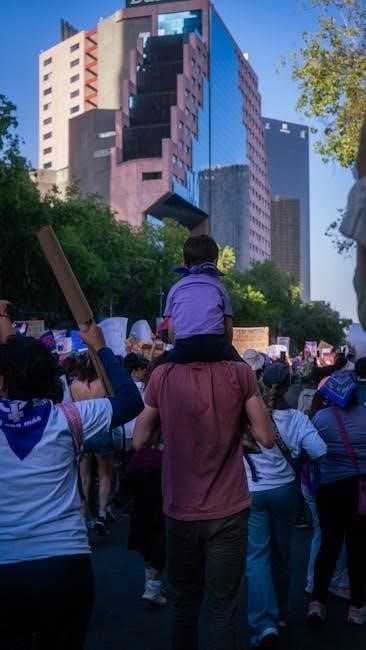
International Comparisons
Internationally‚ the Children’s Bill of Rights in Divorce varies in implementation‚ reflecting diverse legal and cultural frameworks. Many nations adopt similar principles‚ emphasizing children’s welfare and co-parenting responsibilities‚ while others incorporate unique safeguards tailored to local customs and legal systems.
11.1 Global Perspectives on Children’s Rights
Globally‚ the Children’s Bill of Rights in Divorce is informed by international agreements like the United Nations Convention on the Rights of the Child (UNCRC). Many countries have adopted similar frameworks to protect children’s emotional and legal interests during divorce. These perspectives emphasize the child’s right to expression‚ participation‚ and protection from exploitation. International cooperation and shared legal standards aim to ensure consistency in safeguarding children’s welfare across borders‚ reflecting a collective commitment to their well-being and development.
11.2 Variations in Different Jurisdictions
Jurisdictions vary in implementing children’s rights during divorce‚ reflecting local laws and cultural values. Some countries prioritize children’s autonomy‚ while others emphasize parental responsibilities. For instance‚ European nations often integrate the UNCRC into domestic law‚ ensuring children’s voices are heard. In contrast‚ some jurisdictions focus on maintaining parental involvement without formal rights frameworks. These variations highlight the balance between universal child rights and regional legal traditions‚ influencing how divorce laws protect children’s interests worldwide.
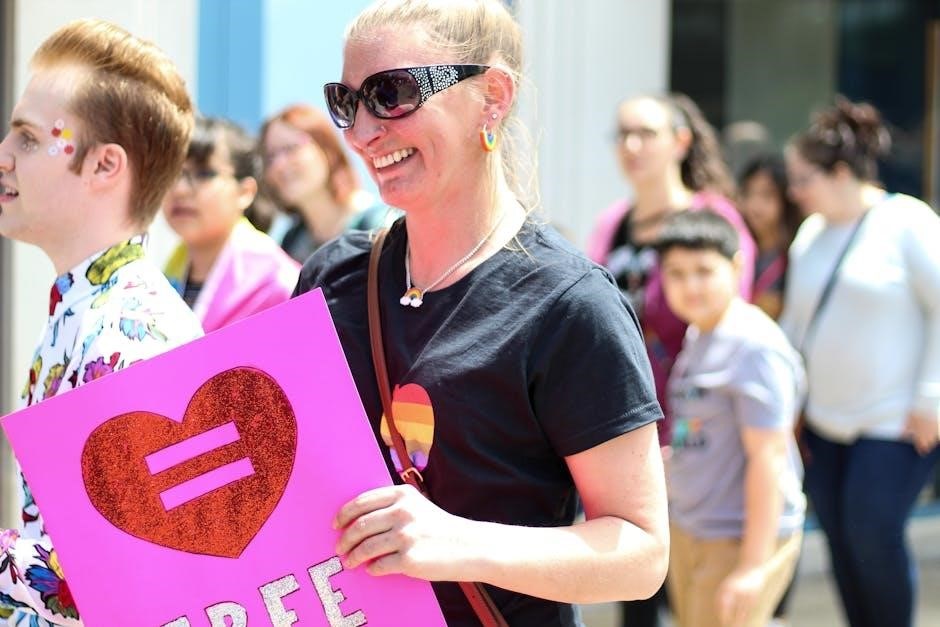
Future Directions and Reforms
Future reforms aim to strengthen legal protections for children in divorce‚ focusing on updated policies‚ international collaboration‚ and advocacy for children’s rights in evolving family dynamics.
12.1 Proposed Reforms and Updates
Proposed reforms aim to modernize the Children’s Bill of Rights in Divorce‚ ensuring alignment with evolving family dynamics and international standards. Updates include strengthening legal protections‚ enhancing children’s participation in decision-making‚ and expanding access to support services. Advocates emphasize the need for clearer guidelines on digital rights and mental health support. Reforms also focus on improving enforcement mechanisms and fostering collaboration between legal systems worldwide to protect children’s best interests consistently.
12.2 Advocacy Movements for Children’s Rights
Advocacy movements play a crucial role in promoting and protecting children’s rights during divorce. Organizations like UNICEF and local child rights groups actively campaign for stronger legal frameworks and awareness. These movements emphasize the importance of children’s voices being heard and their best interests prioritized. Through public campaigns‚ policy influence‚ and community engagement‚ advocates strive to ensure equitable treatment and support for children in divorce proceedings‚ fostering a society that upholds their rights and well-being.
The Children’s Bill of Rights in Divorce is a vital framework ensuring children’s well-being during parental separation. It balances legal protection with emotional support‚ fostering a stable future.
13.1 Summary of Key Points
The Children’s Bill of Rights in Divorce ensures children’s emotional and legal protection during parental separation. It emphasizes their right to protection‚ participation‚ and freedom of expression‚ while balancing parents’ responsibilities. The Bill aligns with international frameworks like the UNCRC‚ promoting stability and fairness. Awareness campaigns and legal safeguards are crucial for its enforcement‚ ensuring children’s voices are heard and their well-being prioritized. This framework fosters long-term benefits‚ supporting children’s development and safeguarding their rights in diverse family situations.
13.2 Final Thoughts on the Bill’s Impact
The Children’s Bill of Rights in Divorce represents a vital step toward safeguarding children’s futures during parental separation. By prioritizing their well-being and legal protection‚ it ensures their voices are heard and their needs are met. The Bill’s alignment with international frameworks‚ like the UNCRC‚ underscores its global relevance. While challenges remain‚ its impact is undeniable‚ fostering stability and fairness. Continued advocacy and awareness are essential to uphold its principles‚ ensuring children thrive despite family changes. This Bill is a cornerstone for protecting young lives and promoting long-term emotional resilience.
